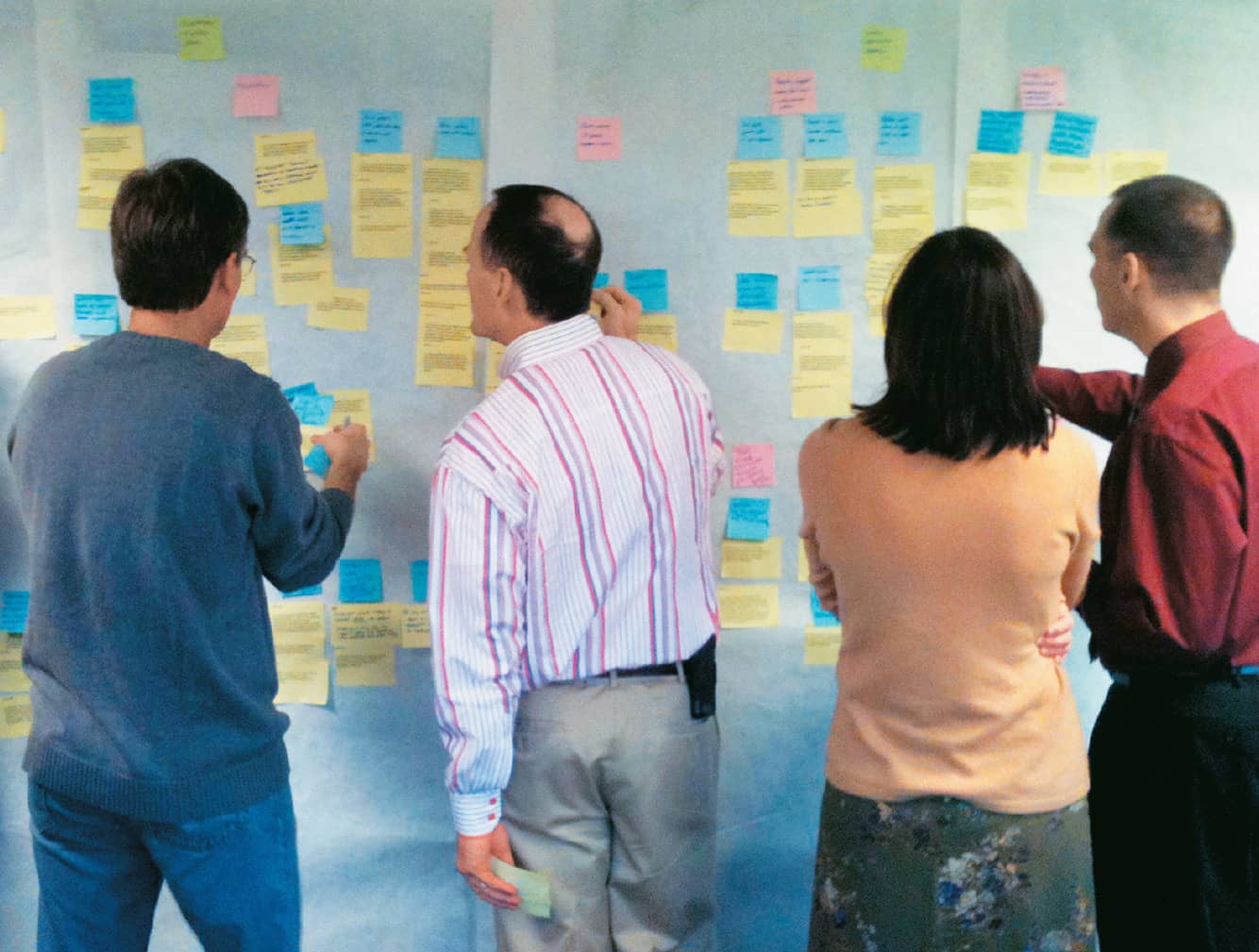RESEARCH METHOD
20 Contextual Inquiry

Contextual inquiry is an immersive, contextual method of observing and interviewing that reveals underlying (and invisible) work structure.1
Before design teams can improve the ways in which people work, researchers must observe work where it happens. Spending time where work takes place is a precondition to understanding users’ tacit knowledge, and contextual inquiry provides a framework that places the researcher on-site as a participant in the inquiry, and begins the process of exposing underlying work structure.
There are four principles that define the contextual inquiry method:2
Context The most basic requirement for contextual inquiry is that researchers must spend time where the work happens. It is critical to understand the “ongoing experience” of the worker rather than just the “summary experience.” To discover underlying work structure, the researcher has to observe details about the day-to-day activities of people.
Partnership One of the most powerful characteristics of contextual inquiry is its application of the master/apprentice relationship model. Just as an apprentice learns by watching, respectfully asking questions, and seeking to understand why things are done a certain way, the master craftsman teaches by doing and talking about tasks as they play out. The transfer of knowledge about work structure happens more reliably when people talk about how they work while they do the work. As a result, the research data more reliably reflects reality.
Interpretation What researchers see and hear is just the starting point—all data must be interpreted for meaning before its design implications can be understood. From the data (what was heard or observed), researchers make a hypothesis (or interpretation) about what that data means to the participant. It is critical to double-check your interpretations while on-site with the participant; if this opportunity is missed, the misinterpretation could lead to failed design implications and ideas.
Focus The contextual inquiry researcher must learn to expand the limits of his or her personal focus and see more in the participant’s world. Any time a researcher is surprised, finds a participant’s behavior idiosyncratic, or picks up on a contradiction, there is an opportunity for the researcher to refocus the interview to see beyond personal experiences.
Use contextual inquiry to understand communication flows, sequence of tasks, the artifacts and tools people use to accomplish work, the impact and influence of the culture on the work, and also, the impact and influence of the physical environment on the work.3 A contextual interview is usually completed in a two-to three-hour session. How many people you need to interview depends on the scope of the project and work you want to support, but you need to interview multiple people in different user segments before the synthesis of contextual inquiry findings can begin (see Affinity Diagramming).
1. Contextual inquiry is a method adapted from the immersive work of ethnographers. The method was invented by Karen Holtzblatt as part of the contextual design customer-centered process. Karen is a member of the CHI Academy, and in 2010 she received CHI’s first Lifetime Achievement Award for Practice for her prolific contributions to the field of human-computer interaction.
2. Contextual inquiry is just one part of the contextual design process, which also includes work modeling, consolidation (which uses affinity diagramming), work redesign, user environment design, and prototyping and testing with customers. Each of these sections is fully defined in Holtzblatt and Beyer’s book:
Holtzblatt, Karen, and Hugh Beyer. Contextual Design: A Customer-Centered Approach to Systems Design. San Francisco, CA: Morgan Kaufmann, 1998.
3. See note 2 above.
Further Reading
Holtzblatt, Karen, Jessamyn Burns Wendell, and Shelley Wood. Rapid Contextual Design: A How-To Guide to Key Techniques for User-Centered Design. San Francisco, CA: Morgan Kaufmann, 2004.

Unless observed, most people will summarize their work activities and speak abstractly about tasks, because typically their processes are invisible to them. Contextual Inquiry provides a way to structure interviews with people that expose specific details about how they work, and helps expose underlying work structure. In the photo above, an InContext Design researcher is conducting a contextual inquiry interview.

After the interview, the InContext Design team works together in an affinity diagramming exercise that helps externalize the complexity of a work system revealed in the interviews.
Courtesy of InContext Design
